Did you know identity fraud impacts millions of Canadians each year? It costs individuals over $300 per incident on average. As cybercriminals grow more advanced, it’s crucial to keep your information safe. Knowing the risks and what you could lose helps you build stronger defenses.
In this article, we’ll share tips to prevent identity fraud. These hints aim to keep your private information secure. Learn how to protect your Social Insurance Number and spot phishing scams. We’re here to help you stay safe.
Understanding Identity Fraud and Its Impact
Identity fraud is a big problem that impacts people and businesses. Knowing how these crimes happen and what they cause is key. We’ll look at common tricks used by criminals and how their actions can spread.
Common Methods of Identity Theft
There are many ways criminals steal identities, and they keep finding new methods. Here are some usual tactics:
- Phishing: Tricksters use fake emails or websites to get personal info.
- Data Breaches: Hackers break into systems and steal private data.
- Skimming: Devices on ATMs or sales systems grab card details during transactions.
- Social Engineering: People are manipulated into sharing confidential info.
Potential Consequences
The effects of identity theft are broad and can deeply impact someone’s life. Here’s how:
- Financial Loss: Victims might find unauthorized money moves or accounts opened, causing big money problems.
- Credit Damage: Fake activities can ruin someone’s credit, affecting loans or financial needs.
- Emotional Distress: Victims often feel stressed, anxious, and exposed.
- Legal Issues: There may be legal battles and a long process to fix their identity.
Tips to Prevent Identity Fraud
Knowing how to protect your identity is key. Let’s explore important tips to keep you safe from identity fraud.
Protect Your SIN and Personal Information
Keeping your SIN (Social Insurance Number) safe is a must. Share it only when it’s really needed, as thieves often target it. Keep your SIN card in a safe place and try to memorize the number to avoid losing it.
Also, be careful with your personal info. Don’t share things like your birth date or address on unsafe sites. Always shred documents with personal details before throwing them away.
Be Wary of Phishing Scams
Phishing scams trick you into giving out personal info. To avoid them, don’t click on strange links or open files from unknown emails. Always double-check the sender before giving out any information.
Change your passwords often and use extra security steps. This means, even if someone gets your password, they can’t access your accounts without a special code.
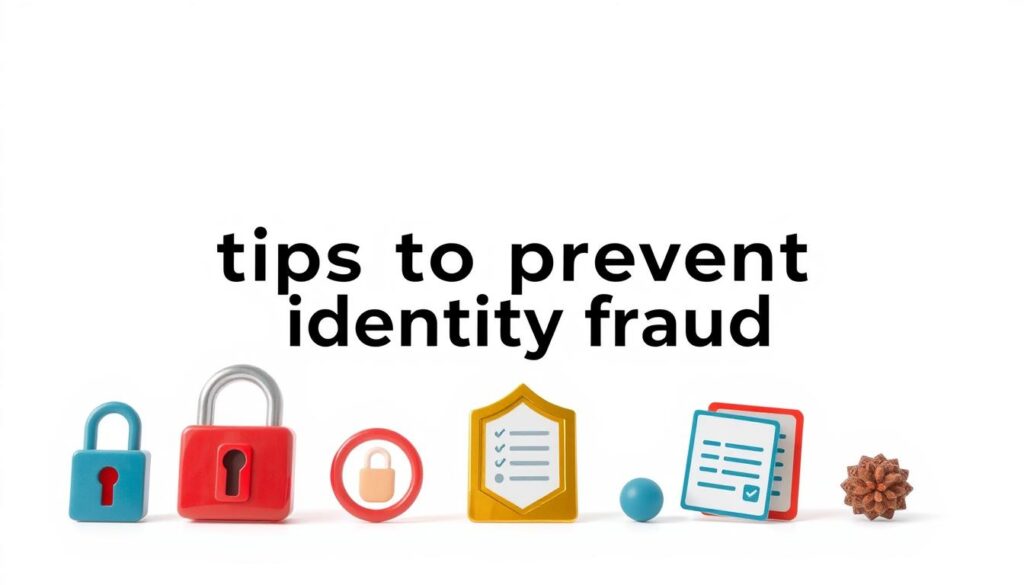
Keeping these tips in mind can greatly lower the chance of identity fraud. By being proactive, you can protect your SIN and personal info. This keeps your identity safe from hackers.
Secure Online Practices for Personal Information Protection
It’s crucial to use secure online practices to protect your personal info. By using strong passwords and multi-factor authentication, you can lower the chances of identity theft and cyber threats.
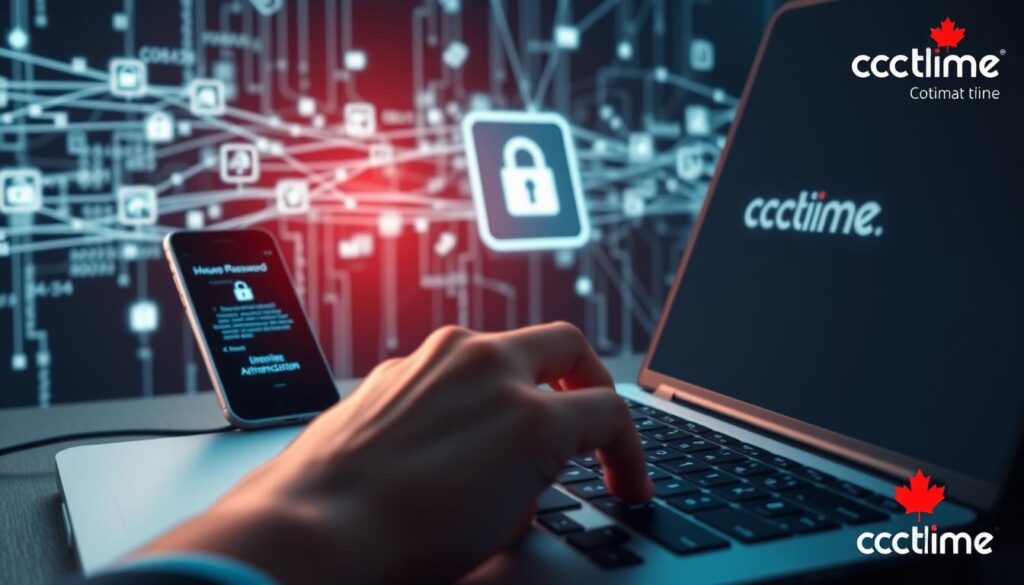
Using Strong Passwords and Multi-Factor Authentication
Using strong passwords can greatly secure your online accounts. A strong password includes both upper and lower case letters, numbers, and symbols. Don’t use things like birthdays or simple words that are easy to guess.
Multi-factor authentication (MFA) adds extra security. It makes it tougher for hackers to get into your accounts, even if they know your password. Adding MFA, especially for important accounts, is key for safe online habits. Check out these secure online practices too.
Safe Online Shopping and Banking
Being careful when shopping or banking online is important. Always use trustworthy websites and check if the URL starts with “https” to ensure a secure connection. Watch out for phishing attacks through texts, emails, or social media that ask for personal info.
Stay away from public Wi-Fi when doing anything with your money online, to keep your data safe from hackers. It’s good to keep an eye on your bank accounts and credit reports to spot any strange activity quickly. Visit the Canadian Anti-Fraud Centre for more safe banking tips and report any suspicious activities right away. Being proactive helps protect your personal information.
Following these tips for secure online practices and banking safety can really improve your protect against identity theft. For more advice, take a look at what the Canadian Centre for Cyber Security has to offer.
Maintaining Vigilance: Monitoring and Immediate Actions
To stay ahead in the fight against identity theft, being proactive is key. One major step is monitoring identity theft. This constant watch lets you spot and fix any unauthorized actions fast. Use credit monitoring from Equifax or TransUnion to watch your credit reports. These services alert you to any odd activity, so you can act quick.
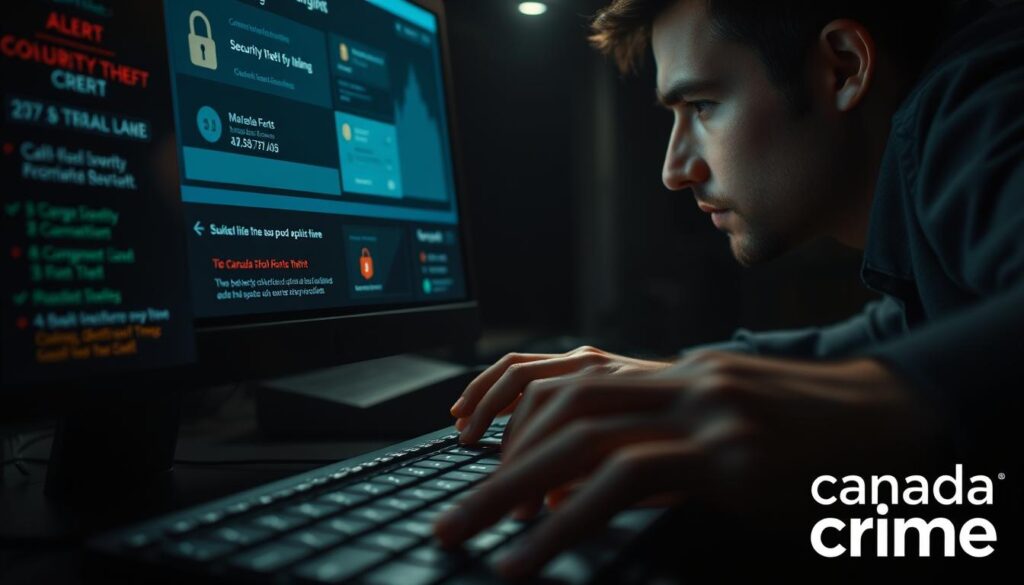
For immediate actions for fraud prevention, fast response is vital. If you think there’s fraud, contact your banks right away to freeze accounts and stop more unauthorized charges. Also, tell the Canadian Anti-Fraud Centre to get extra help and protection.
Knowing how scammers work is just as crucial. Steady monitoring identity theft shines a light on their tactics, aiding in stopping threats before they happen. Here’s a comparison of key actions:
| Action | Description | Impact |
|---|---|---|
| Monitoring Identity Theft | Regularly checking your credit reports and using monitoring services. | Early detection of suspicious activities, preventing larger fraud. |
| Immediate Actions for Fraud Prevention | Contacting financial institutions and reporting fraud cases without delay. | Quickly halting unauthorized transactions and limiting financial loss. |
Physical Security Measures to Avoid Identity Fraud
Keeping your identity safe is crucial. This means both physical and digital security measures are important. By making sure your documents and devices are safe, you can really cut down the chances of identity theft.
Securing Important Documents
It’s very important to keep your personal documents safe. Start by storing important papers like Social Insurance Numbers (SIN), birth certificates, and passports in a secure, fireproof safe. Always check which documents you must keep and safely get rid of the ones you don’t need anymore.
Shredding is a great way to destroy documents that you no longer require. Use a cross-cut shredder for better security. Also, think about making digital copies of important papers and keeping them safely in encrypted form. This reduces the need to handle a lot of paper documents.
Protecting Personal Devices
Protecting your devices is key too. Set up strong passwords and use fingerprint or facial recognition on your devices like smartphones, tablets, and laptops. Make sure to update your software regularly to stay safe from new threats.
Don’t forget about antivirus and anti-malware software. Installing trusted security software and keeping it up-to-date is important for defending your devices from attacks.

Here is a table that compares practical steps for keeping documents and devices safe:
| Document Security Tips | Device Protection Tips |
|---|---|
| Store documents in a fireproof safe | Use strong passwords |
| Shred sensitive papers | Enable biometric authentication |
| Digitize and encrypt documents | Keep software updates current |
| Regularly review documents | Install reputable security software |
By using these tips, you can make your documents and devices more secure. This helps greatly reduce the risk of identity theft.
Understanding and Using Fraud Alerts
In today’s world, identity theft is a big problem. Using fraud alerts is a key way to protect your info. These alerts tell creditors and businesses that your identity might be stolen. When you set up an alert, it makes sure extra checks are done before any new credit is opened in your name. This adds a strong layer of security.
Having a fraud alert can stop thieves in their tracks. For example, once an alert is in place, creditors must call you before giving out credit. So, even if someone has your info, they can’t get credit without your okay.
Setting up fraud alerts is easy. Just call one of the big credit bureaus—Equifax, Experian, or TransUnion. The alert lasts for a year and can be renewed. It also gets sent to the other bureaus, so you’re fully covered.
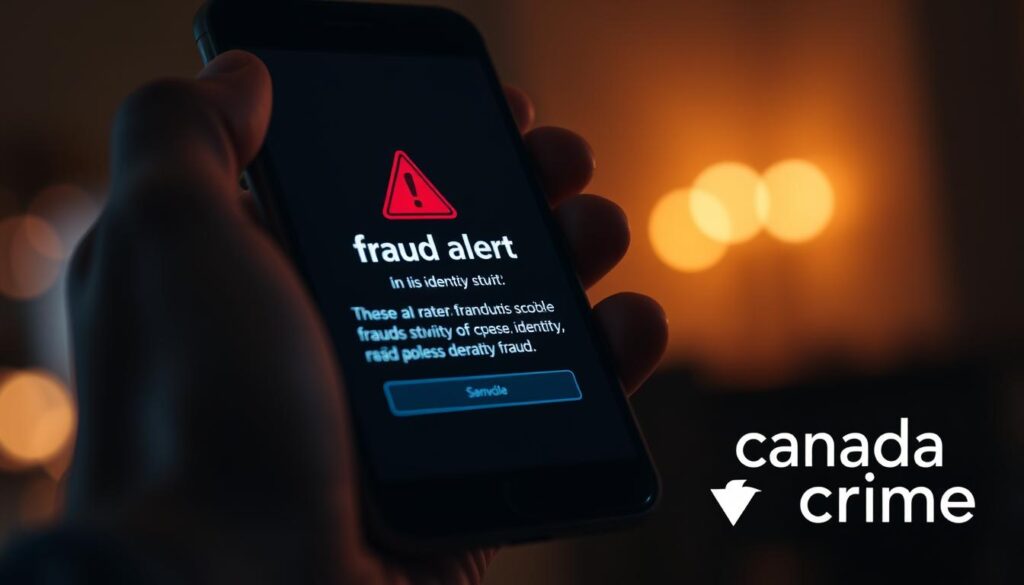
A recent scam in Ontario shows how important fraud alerts are. In this scam, someone lost over $63,000 due to fake bank calls and buying gold. It shows how crucial it is to use fraud alerts and be careful. Always double-check when you get weird messages and talk to someone you trust when making big money moves.
Using fraud alerts is smart both now and for the future. Being ahead of the game keeps your info safe from bad guys. By being active and alert, you can lower the risk and protect your personal and money details.
Handling Suspicious Emails and Communications
Today, it’s very important to know how to spot and deal with suspicious emails for your safety. Phishing attacks, where people try to trick you into giving up personal info, are common. To keep your personal details safe, follow these identity fraud prevention tips.
Recognizing Phishing Emails
Phishing emails might look like they come from trusted companies. They aim to trick you into giving away personal data. Knowing how to spot these scams is key. Watch out for urgent warnings about your account or requests for personal or financial info. Remember, legitimate companies won’t ask for your payment details through email or texts.
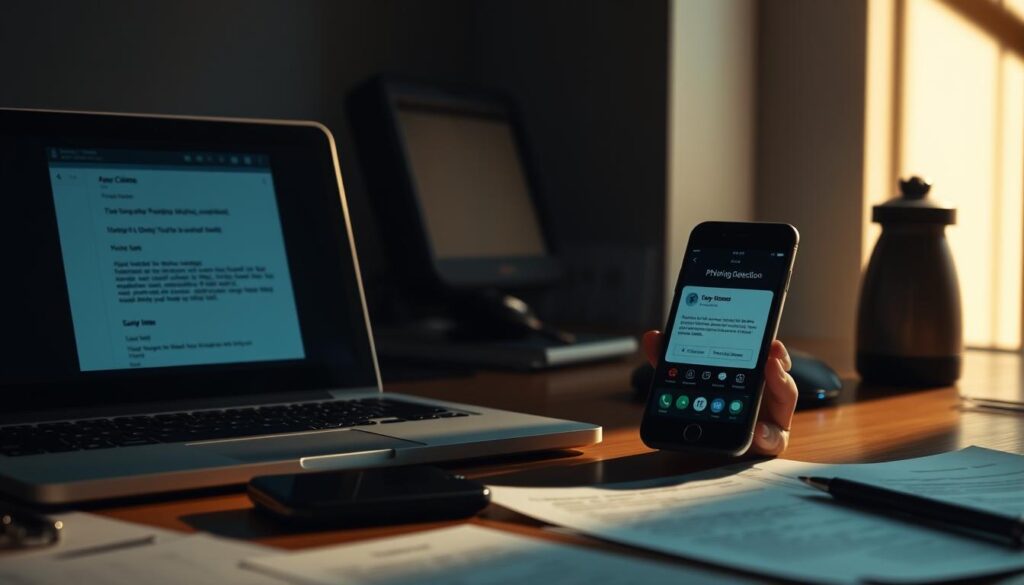
- Check the sender’s email address for inconsistencies.
- Avoid clicking on suspicious links; hover over them to see the actual URL.
- Look for spelling and grammatical errors, which are common in phishing scams.
- Be wary of attachments from unknown sources.
Steps to Take When Receiving Suspicious Communications
If you get a suspicious email, take steps to stay safe. First, see if you know the sender or the company. If it seems off, report and delete the email. Also, you can forward suspicious emails to [email protected] and phishing texts to SPAM (7726).
- Use security software on your computer and phone, setting it to update automatically.
- Enable multi-factor authentication for an added layer of security.
- Regularly back up your data to protect against unexpected losses.
If you’ve accidentally given out info to a phishing scam, visit IdentityTheft.gov for help on what to do next. Plus, report the phishing to the FTC at ReportFraud.ftc.gov. This will help you stay alert and protect your identity.
Leveraging Professional Services for Identity Protection
In today’s world, professional identity protection services are more important than ever. They help keep your personal info safe from hackers. By watching over your data, these services prevent identity theft.

Companies like LifeLock and Identity Guard keep an eye on your money moves. They quickly tell you if they see something odd. Plus, they’re always ready to help if there’s any trouble.
Key benefits include:
- 24/7 Monitoring: They watch your data all the time.
- Fraud Alerts: You get instant warnings about strange activity.
- Recovery Assistance: Experts help fix issues if your identity gets stolen.
- Insurance Coverage: You’re covered for costs caused by identity theft.
Another big plus is how they help you get your identity back. This is a huge relief and saves a lot of headache. Companies like Equifax and TransUnion have special plans for people in Canada.
Choosing professional identity protection services means you’re looking out for your future. With cybercrime going up, it’s smart to have pros by your side.
Conclusion
Finishing our talk on identity theft, we’ve learned that being proactive is key to reducing risk. Knowing how thieves steal identities, like with phishing scams, is your main defense.
How you act online is very important in keeping your info safe. Using strong passwords and multi-factor authentication helps a lot. Also, being careful with your personal info during online activities is crucial.
Securing your physical documents and devices is also essential. This step adds extra safety against identity theft.
Being informed and careful always helps. Check your bank activities often and respond fast to any strange emails or messages. Getting help from identity protection services adds more safety.
In short, stopping identity theft needs steps that cover your online and offline life. By following these important tips day by day, you can keep your information secure and feel safe.

